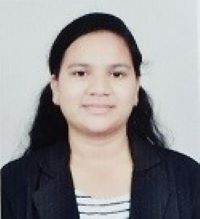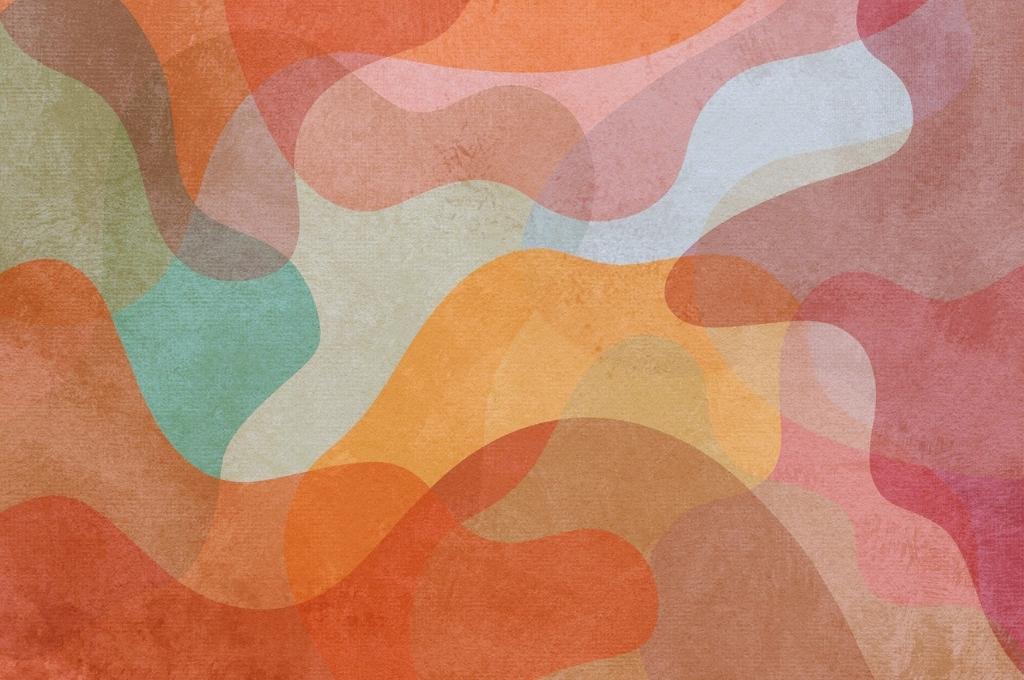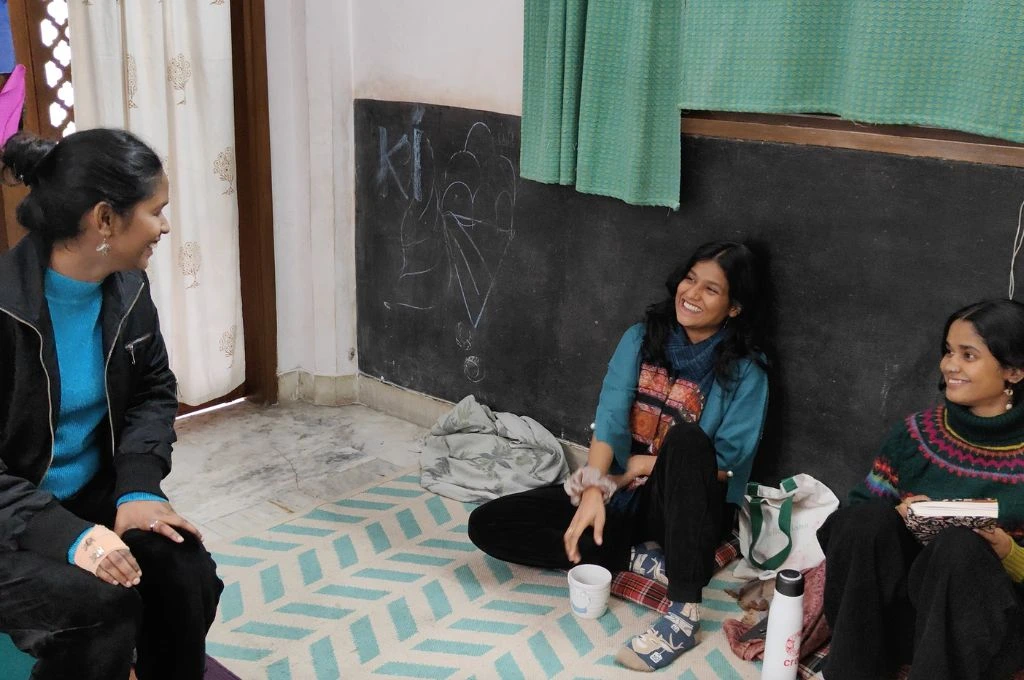I am an Adivasi woman from a small village called Panibar in Gujarat’s Chhotaudepur district. I belong to the Rathwa tribe, classified as a scheduled tribe (ST). I am the youngest of three siblings. My eldest brother is a doctor, and my other brother is currently working with ONGC. I live with my parents and my eldest brother and his family.
I am a journalist by training, and worked in a newsroom for two years once I completed my journalism degree. After quitting the newsroom, I launched my own YouTube channel, Aadim Samvad. Through the channel, I aim to present the stories of the Adivasi community in their own language. With the consensus and participation of the community, I am amplifying the voices that have historically remained unheard.
I am also a member of an informal network of tribal women and a documenter at the Bhasha Research and Publication Center, which works on conservation of marginalised languages. At Bhasha, I document the culture of de-notified tribes in Gujarat, Rajasthan, and Madhya Pradesh, while my work with the women’s network focuses on empowering marginalised women. The women in the network belong to a diverse array of fields and are affiliated with a number of Adivasi institutions, such as Adivasi Ekta Parishad and Adivasi Sahitya Akademi. We organise workshops and trainings based on our own expertise, and also invite experts from other fields to share their insights. We visit girls in schools and hostels, encourage them to pursue a career of their liking, and answer questions they might have about our professions.
5.30 AM: I wake up early and meditate. Meditation helps me centre myself and prepare for the day ahead. I adopted the practice during my time at Disom, a leadership school that focuses on nurturing leaders from marginalised sections of society.
At Disom, I was encouraged to find my inner voice and reflect on the factors that subdue it. As someone who has experienced discrimination at various stages in my life, this practice helped me understand and address discrimination in a more meaningful way.
I was also exposed to a diverse cohort of young leaders. Learning about their experiences helped me recognise how it wasn’t just my community that faced discrimination. I was able to empathise with their pain, and I moved beyond only caring about ‘me and my community’ to thinking about ‘us and our communities’. Now I make a concerted effort to understand the perspectives of the communities I work with. I value their opinions and their rituals in a manner that my younger, naive self was not able to do.
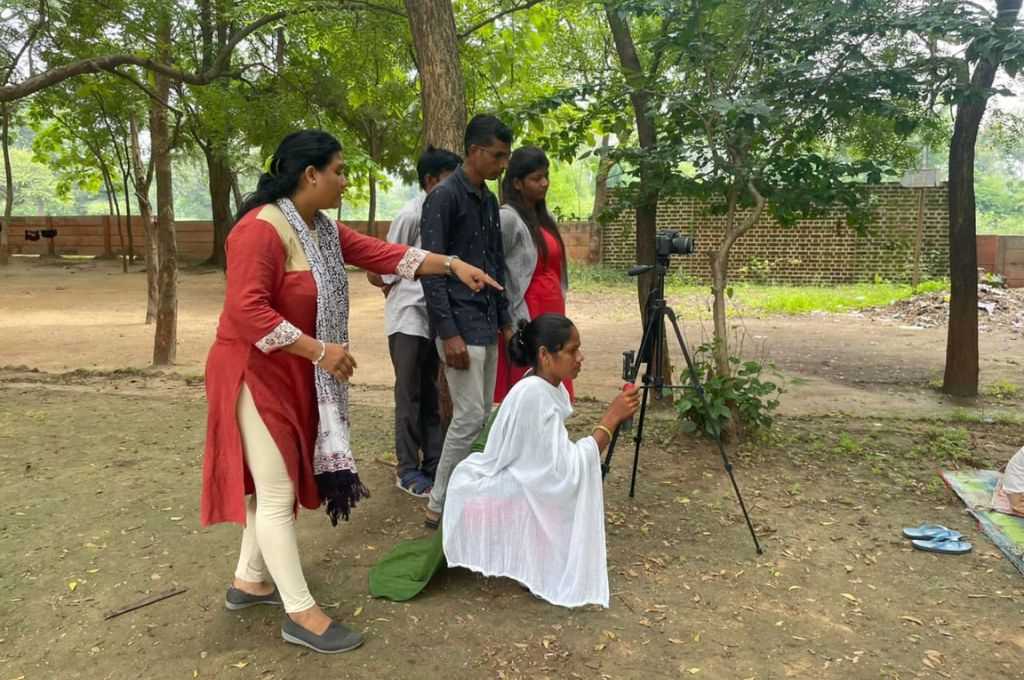
6.00 AM: Soon after waking up, I help my niece get ready for school. My own time in school was starkly different. After fourth grade, my brothers and I studied at Don Bosco, a convent school that was outside our village.
The school was too far away for me to commute daily, so I lived at the girls’ hostel on campus. As a convent-educated girl, the rituals and festivals that I witnessed in my village felt quite alien to me. At school, we were taught about the Bible. In fact, I can still quote many of its verses from memory. I was so distant from my community that a critical part of my Adivasi identity remained obscured from me, until much later.
The younger girls at the hostel would be looked after by the older ones, and we would often hear about them getting engaged after completing the 10th grade. The possibility of potentially suffering from the same fate terrified me.
I was close to the priests and nuns running the school. I would often ask them about life after school. At our graduation ceremony, Father James Tuscano, a priest who taught at the school, told me, “Right now, you’re zero—a mere dot. As you go out into the world and explore your curiosities and interests, you will begin to collect more dots; you’ll add up to a number.” This helped me realise that there’s a larger world outside the confines of my school that I had yet to discover. Many of my classmates were weeping because they knew that married life awaited them, but I was excited to do something new in the next chapter of my life.
Women from our community would have to pave their own way if they had to get educated.
However, the enthusiasm was short-lived. I started pursuing a BCA course outside my district. Knowing that Chhotaudepur is an Adivasi district, many of my peers who belonged to Chaudhary and Patel communities barely interacted with me. But their callousness towards me only made me more curious about my heritage. Later, when I wanted to apply for a scholarship as a student from a scheduled tribe, they simply denied my request because they didn’t know what documents I had to provide to obtain it. Nevertheless, I reapplied the following year after collating all the necessary information myself, and my application was accepted. This experience made me see that women from our community would have to pave their own way if they had to get educated.
I availed the ST reservation to apply for a journalism degree. After submitting my application, I received a call from the institute I applied to and was informed that I was the first ST candidate for their journalism course. They told me that the course would be in English, and that I should consider withdrawing my application as I was not well versed with the language. It pained me to hear this. I wondered why my not knowing English mattered so much to them. Was it just because I belonged to a scheduled tribe? But I wouldn’t be deterred by this, so I took up English classes. In 2018, I graduated with a degree in journalism.

8.00 AM: I help my mother prepare breakfast for the household. Since she tends to the field for most of the day and my father’s police duty keeps him away from home for long hours, breakfast is the perfect opportunity for me to spend time with both of them. I cherish my relationship with my parents, and they inspire me in various ways. An active member of the community, my mother motivates me to develop a stronger connection with those around me. She manages not just our household but also our farm, and ensures they both flourish.
As an Adivasi policeman, my father is in a peculiar position. The job of a policeman is not viewed as a favourable career choice in our community because the police has a history of violence against Adivasis. My father took it up because after my grandfather’s death, the family needed that income.
But he chose to work in the non-weaponry department, and eventually as a driver for police vehicles, to avoid directly being part of police oppression of Adivasi people. He has been transferred several times during his career. But he won’t accept bribes, harass the poor, or get involved in busting the local liquor businesses, which is a traditional occupation of some Adivasi communities. When I once told him that the police should be stricter towards those who sell liquor, he urged me to be more empathetic, noting that it may be the only source of livelihood for the people who neither have land nor access to forests.
Despite having a job in the city, he would travel back to the village to look after our farm. He was always a farmer first. I feel I am repeating that cycle from city to village and gradually returning to my roots and my community.
9.30 AM: I finish my breakfast and start with my work. Some days, I work from the Bhasha office; on others, I travel to visit the tribes that I document. It is often difficult to go to the remote locations where these communities are located. Once I’m there, the community’s elected officials, such as the sarpanch, occasionally object to my presence because they are suspicious about my intentions as an outsider.
I have benefited more from the communities I work with than they have from me.
When this happens, I sit with them and explain the objectives of my work to them. If they are willing, I take them with me so that they can observe my work and witness how it benefits the community. Then, I encourage them to join me if they can. Despite its challenges, the work can also be really rewarding. I have benefited more from the communities I work with than they have from me. I still feel like I have a long way to go before I understand their conditions and comprehend the vastness of their knowledge.
Recently, I worked on a documentary, How Your Papers Can Define Our Identity, on the issue of Rathwa-Koli caste certification. For an ST certificate, individuals from the community had to appear before the Tribal Advisory Council and verify that we’re ‘legitimate Adivasis’. We needed that certificate for education scholarship and even for government jobs. To make the documentary, I first had to create greater awareness regarding the issue within the community. The rest of the documentary team and I would speak to other members of the community to inform them about the issue and ask them about their views on it. I would often do multiple follow-up interviews as the issue developed further. The entire experience taught me a lot.
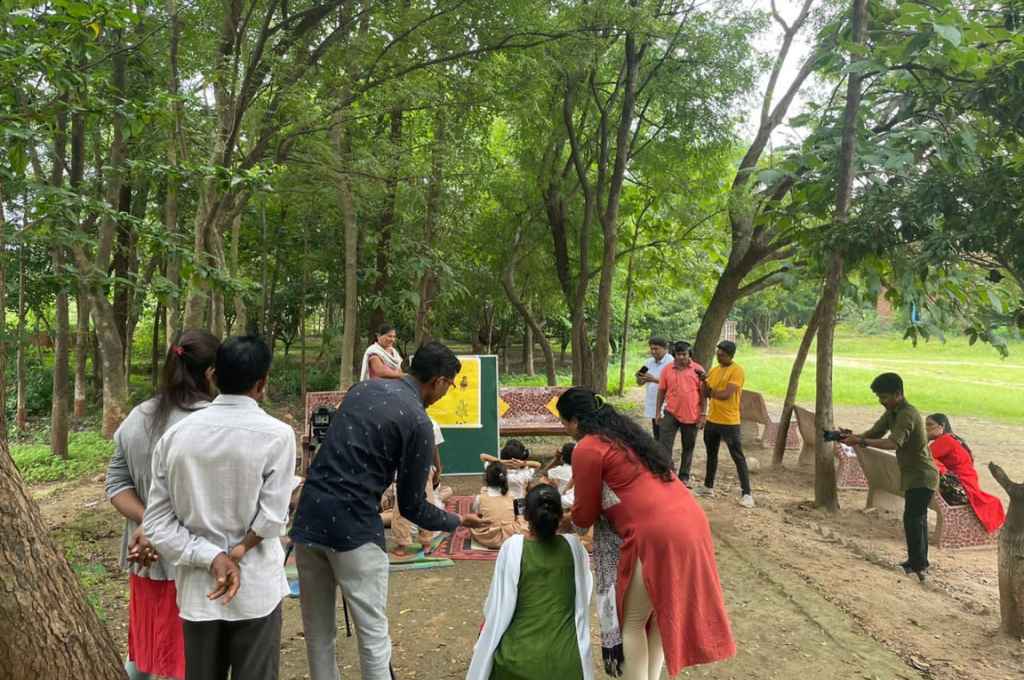
12.00 PM: On days when I don’t go to the office, I help out my mother at the farm. When I was younger, my grandmother would take me to the farm and teach me about the various crops there. In line with the Adivasi way of life, she encouraged me to develop a closer relationship with nature. My grandmother is also a great inspiration for me. Despite being a young widow, she managed to acquire rights over her husband’s land so that she could pass it on to her children. This was unprecedented in our village, where widows would often get labelled as ‘witches’ and their land would get taken from them by their extended families or others eyeing the land. She would often tell me stories, and I have written some of them down. One of the stories, which I wrote in Rathwi, our native tongue, even got published as part of a collection of short stories.
6.00 PM: I’m responsible for preparing dinner at home, so that’s what I get to first after returning from work. We try to eat food together as a family, and since my father’s work timings can vary greatly, we occasionally have dinner as late as 10 PM. Once the food is prepared, I work on editing videos and researching for my YouTube channel. I launched the channel after being disillusioned by my two-year stint in a newsroom, where I realised that the voices of the marginalised were rarely represented in the media.
I quit my job in 2020, just five days before the nationwide lockdown due to COVID-19, and launched the self-funded Aadim Samvad YouTube channel. I use my own equipment and I am the channel’s sole videographer and editor. Aadim Samvad documents the Adivasi way of life, including community rituals and knowledge.
I now want to work more closely with my community, particularly for the benefit of our women.
Having been away for years for my education and then for my career, I now want to work more closely with my community, particularly for the benefit of our women. I must share my learnings with them and help them get the education and exposure that I got. Journalism is one way of connecting with them, but I also give back to the community through the work I do as part of a network of Adivasi women from various states. Recently, we have been working on providing a platform for bead workers to showcase their craft and connect them to the market.
11.00 PM: Before sleeping, I journal about my day and prepare for the following day. I also reflect on my hopes for the future. Discrimination and hierarchies are not engendered in the Adivasi community. Instead, every living creature, including plants and wildlife, is valued and respected in Adivasi society. Even a dry twig is understood to have value, for it can be used as kindling. I hope for a similar world view—one that encourages relating to each other on a deeper level—to be adopted by society at large. I think doing so can help resolve various structural problems.
As told to IDR.
—


